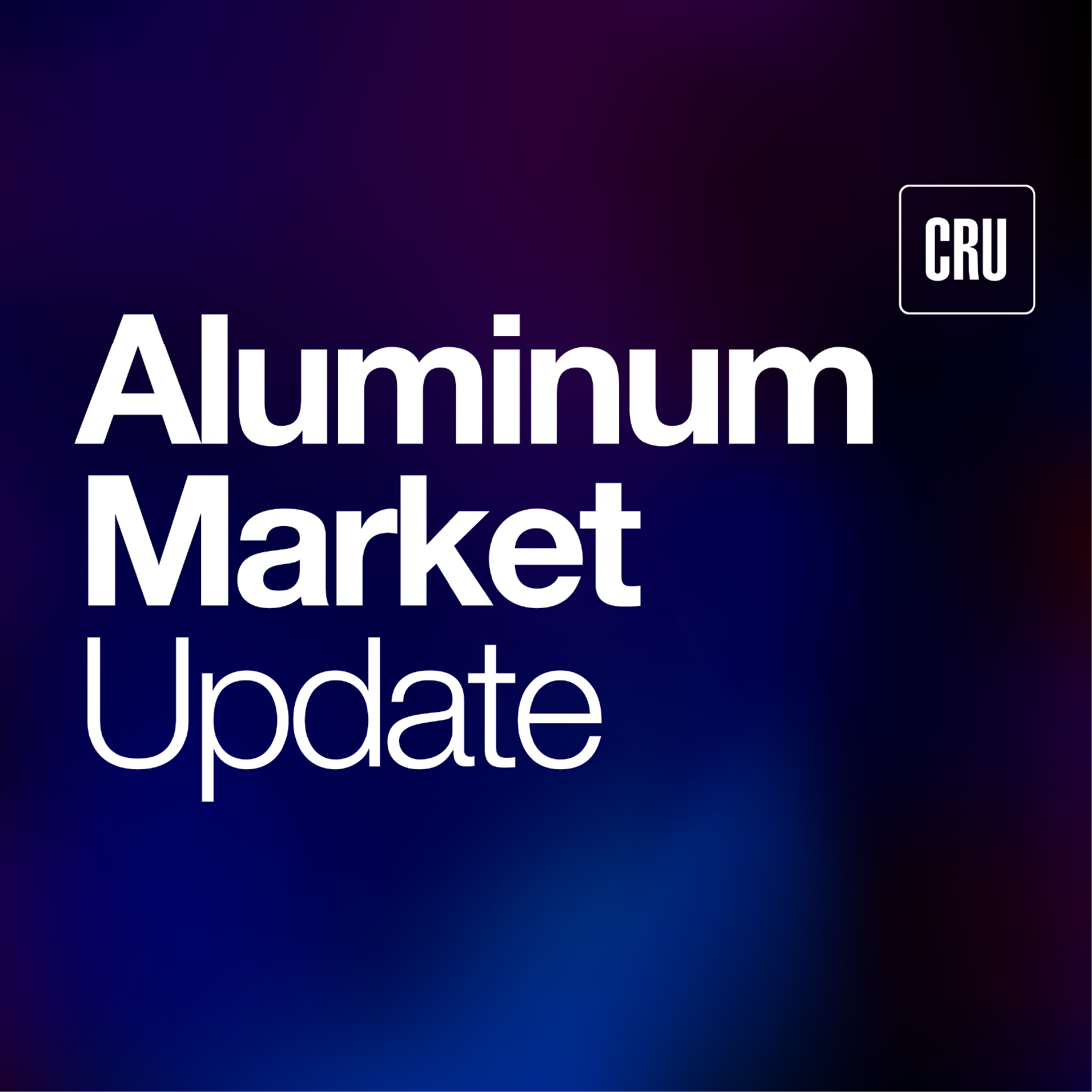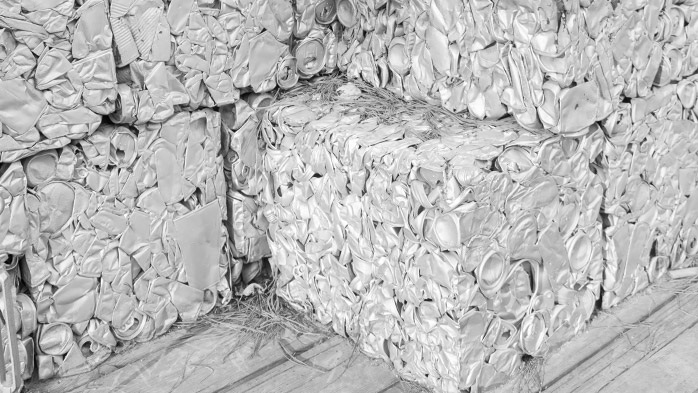Aluminum Scrap Markets

October 3, 2025
The third coming of Indonesia in aluminum
Written by Greg Wittbecker
Indonesia is grabbling a lot of attention these days, thanks to ambitious plans by Chinese investors to bet big on aluminum smelting. This is not the first time that Indonesia has captured the attention of the aluminum industry. It has undergone several cycles.
The bauxite export cycle
The first cycle of Indonesia in the aluminum world was as a major exporter of bauxite from Kalimantan Province 10-15 years ago. Chinese alumina refiners were depleting their domestic ore bodies and needed to replace it with imported bauxite. Indonesia had excellent quality and the freight cost back to the major eastern coastal ports of China was reasonable.
China went all in, pushing imports to over 20 million metric tons/year from Indonesia. However, this surge in exports didn’t go down well in Indonesia, where rising “mineral nationalism” led the country to ban outright exports in June 2023. This came right out of Indonesia’s playbook, which had banned nickel and copper concentrates earlier. The country’s logic was simple: It wanted more value for its ore bodies than a “one and done” export movement for which they earned relatively small depletion royalties. Instead, Indonesia pushed the incumbent miners and exporters to develop value-added investment in Indonesia. This meant building alumina refineries.
The alumina refining cycle
Indonesia’s ban on bauxite exports triggered the second cycle, as Chinese bauxite exporters built alumina refineries in Kalimantan and Bintan Island in order to earn limited bauxite export quotas. These refineries were not inexpensive to build relative to domestic Chinese refineries, nor were their operating costs that low, as energy was more expensive. At best, these refineries were high first quartile or low second quartile on the global alumina production cost curve.
However, the Chinese exporters took the long view that they could use the alumina back in China and it preserved access to some Indonesian bauxite, which yielded good margins when refined in China.
Now, more refineries are on the drawing boards as Indonesia enters its third cycle, which is substantial growth in aluminum smelting.
The aluminum smelting cycle
Indonesia has had one aluminum smelter for years, the INALUM smelter on Sumatra, which was built in 1976. This was funded with Japanese capital when the Japanese exited aluminum smelting domestically after the oil shocks of the early 1970’s. Japan’s logic was it was cheaper to invest overseas and import the metal for consumption in its value-added rolling and extrusion markets.
Since INALUM was built, Indonesia has had aspirations to build more smelters, but only now is real traction being achieved. Fast forward to 2025, and China is borrowing a page from the Japanese investment playbook.
China has a production cap of 45 million metric tons for domestic primary production. It is fast approaching that level and it does not appear Beijing is going to budge on the cap. This has led China to go to Indonesia to develop more primary production which could either be imported back to China to support ongoing domestic demand or exported to the rest of the world.
There is now a massive list of projects being considered. Special thanks to Paul Adkins of AZ Global Consulting for the updated list, enhanced with our analysis of each project.
- Adaro Aluminium: A project of Adaro Energy in partnership with Ningbo Liqin, located in North Kalimantan, with a total capacity of 1.5 million metric tons developed in three stages of 500,000 tons each. This plant has been in the works for some time and is poised to produce first metal in October.
- Bosai Group: This is in the early planning stages for a target of 100,000 tons. Bosai is a reputable Chinese domestic player, but this smelter is not economically scaled. No one builds this small in the modern era. If they does go forward, one should expect this to be at least 500,000 tons.
- China Minmetals: North Kalimantan, planned 1 million tons. Minmetal has deep pockets as a state-owned enterprise (SOE) and has a superb reputation as an operator within multiple nonferrous ventures.
- Cita Mineral Investindo Tbk PT Cita Mineral Investindo Tbk is planning a 500,000-ton smelter in North Kalimantan.
- Huaqing Aluminium: A joint venture between Huafeng Group and Tsingshan, planning 1 million tons of smelting capacity. Phase I (500,000 tons) was commissioned in April; the remaining 500,000 tons is under construction in Sulawesi. Tsinghan is a huge player in stainless steel and is well capitalized.
- Indonesia State Aluminium Company (Inalum): INALUM has floated various joint venture partners over the years including Iranian, South Korean, and Chinese partners. We believe CHALCO has been in the mix for some time. Plans are for a 600,000-ton smelter in West Kalimantan, eventually reaching 900,000 tons.
- LuanChuan Molybdenum: Target of 200,000 tons. This appears to be vision, not a project, coming from an outsider to the industry. I would not assign it high probability. It is far too small to get the economies of scale needed to be built at competitive capex and opex.
- Nanshan Indonesia: Phase I 400,000 tons expected online in 2026, eventually reaching 1 million tons. A major force within Chinese refining, smelting, extrusion and rolling with deep pockets. They have prior experience building alumina refining capacity in Indonesia.
- PT Westerfield Alumina Indonesia: PT Westerfield Alumina Indonesia is a Southeast Asian subsidiary established by China’s East Hope Group. Planning a 2.4-million-ton smelter. East Hope is another heavyweight in Chinese refining and smelting.
- Weiqiao & Halida JV: Planned 1-million-ton smelter in West Kalimantan, targeting 2027 start-up. Next to CHALCO, the largest domestic smelting group within China and the pioneer in building refining capacity in Kalimantan.
- Xinfa Indonesia: Joint venture with Tsingshan, planned 1 million tons. Phase I of 500,000 tons is under construction, and first pots are being energized. Another well-known player from refining and smelting in China.
In total, Indonesia has 11 planned smelters totaling 13 million tons, with Chinese companies accounting for about 84%.
These projects are backed up by expansion in alumina capacity. They will need 24 million-25 million metric tons of alumina to support the full build-out. There is about 7 million tons of installed capacity and Jinjiang Group has plans to build an 8-million-ton plant. They are one of the majors in China and know how to execute something of this scale.
The challenge to the commercialization of Indonesia smelting
These projects are all in various stages of realization but could yield 3 million-5 million tons of production by 2030. However, these projects come with challenges that fall under the following categories:
Capital Expense
Chinese ownership in Indonesia does not mean the Chinese domestic CAPEX model can be replicated. Estimates of Chinese domestic CAPEX are slightly under $1,400 per metric ton. Estimated CAPEX for Indonesia is expected to be around $2,800. That is still good compared estimates for much of the world ex China, which ranges up to $6,000 per ton. China will provide technology, equipment, and expertise in large scale capital projects. But it remains to be seen if they can drive the same labor productivity in Indonesia. Time is money and China is used to building in 12-18 months. Time will tell if they can replicate this in Indonesia.
Quantity and carbon intensity of energy
Kalimantan has both hydro and coal but not enough hydro to support all this expansion. Coal will have to be base load for much of the growth. This means the carbon footprint will be poor and will limit any metal entering the EU in the long term, as the EU is about to launch its Carbon Border Adjustment Mechanism.
The initial phase of CBAM will only tax direct emissions, which means the energy source (indirect emissions) will not be penalized to start. That could give these smelters some breathing room as their direct emissions should be low thanks to the use of the latest Chinese technology. However, CBAM eventually will capture indirect emissions.
The limitations of demand within Asia
It is probable China will take the majority of this new production. However, this assumption can be challenged. China is aware of the economic value of scrap as a means to produce low-carbon, semi- and fully fabricated products for export. Depending upon how rapidly China migrates to a scrap-centric production model, it may not want all this Indonesian primary metal.
If that is the case, the rest of Asia will be able to absorb this tonnage. The Indonesia expansions come even as India continues to expand its primary production, most of which is earmarked for export. Malaysia may also have ambitions to expand. A collision of these three countries’ output in the Asian market would not be pretty.
The answer is to get the metal out of Asia, either to the U.S. or the EU, where the largest primary deficits remain. A strategy to do this would require Indonesia to embrace break bulk export, not the use of containers.
Port infrastructure and freight
Our premise that break bulk freight is essential is because containers are not efficient enough for this volume. Container freight would be too expensive and time consuming, requiring stuffing of containers in Indonesia and de-stuffing at destination. The Middle East smelters are coming to this conclusion, and shifting their exports to the U.S. and EU to break bulk.
Kalimantan has large bulk handling facilities for coal and bauxite. However, it lacks substantial infrastructure for break bulk metal shipments. Break bulk freight consists of moving metal in unitized bundles aboard bulk carriers with large cargo holds. These vessel typically carry 12,000-25,000 metric tons of metal. That size vessel would require 10-12 meters/32–38-foot channel depths. Also, unless the smelters charter more expensive geared bulk carriers, which have their own lifting cranes on board, substantial investment in shore cranes will be needed.
Why This Matters
The market was already baking in assumptions that Indonesia would contribute 3 million tons of new supply in the next five years. Now, reports of these new smelters have prompted estimates to be lifted to 5 million tons. But what about the timing of the remaining 8 million tons that is planned?
All this expansion is giving some people heartburn about what this could do to medium-term London Metal Exchange (LME) prices. Will Indonesia become a proxy for China technology and smelter construction know-how, representing a new, potential cap on LME prices? Where will all the metal go?
In order for China to absorb all 13 million tons of incremental supply, its average annual growth rate needs to be 3%. That’s not out of the question. However, scrap replacement is China is moving quickly, and I question if this level of primary demand is sustainable over the next decade. Still, the same Chinese firms who are investing in big domestic scrap projects (Weiqiao, CHALCO, Minmetals, Nanshan) are in play in Indonesia. These are smart people; they are not investing if they don’t believe they have an outlet for the metal.
At this juncture, we need more clarity on the timing of all the projects and how CAPEX costs will be in Indonesia. Those costs will heavily influence the clearing price on the LME.







